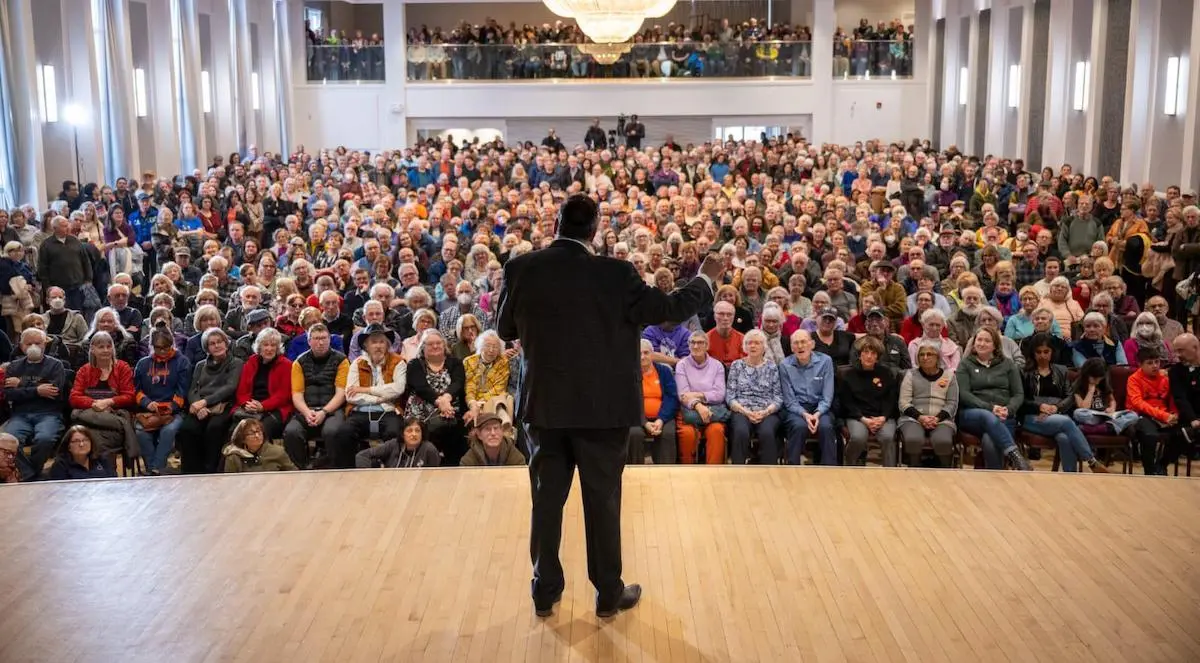Much – probably too much – is being made of the fact the Alberta NDP’s organizing efforts in Calgary have shifted the Opposition party’s centre of gravity from Edmonton to Calgary.
When the NDP released the news on Mother’s Day that its membership had grown from about 16,000 at the end of 2023 to 85,144 members eligible to vote in the party’s leadership election to replace former premier Rachel Notley, the news rocked a number of long-held political assumptions about Alberta.
Then the number crunchers got to work and it didn’t take long before there was a buzz that the NDP was changing from a political phenomenon concentrated in Alberta’s capital city – where the electoral map has been solidly orange since Notley’s victory in 2015, despite the party’s losses to the United Conservative Party (UCP) in 2019 and 2023 – to one that appears to be dominated by members in supposedly conservative Cowtown.
Well, the numbers speak for themselves – it’s just that it’s not entirely clear what they’re saying.
No one is disputing that 39,240 of the party’s paid-up members are now in Calgary, nearly double the 21,253 in Edmonton, with the rest scattered throughout the rest of the province, including suburban communities around the two big cities.
What that means, however, is subject to interpretation – not to mention spin.
According to the headline on a CBC analysis piece last week by reporter Jason Markusoff, the numbers mean the NDP is “the ‘Redmonton’ party no more” – the red reference dating back to the olden days when that colour was headlinese for commies, not Republican voters south of the Medicine Line.
“Nearly twice as many Calgarians will vote for the next NDP leader as Edmontonians,” the subhead on the story concluded, suggestively, but not necessarily accurately.
The dramatic growth in the NDP’s membership is without any doubt partly the result of the interest generated by the race to choose a new leader to replace Notley, who announced in January she intended to step down.
The conventional wisdom is that the membership growth in Calgary has been sparked by former Calgary Mayor Naheed Nenshi’s campaign.
But it’s also true that well before Nenshi declared his interest in leading the NDP, the party had realized it couldn’t win based on its support in Edmonton alone.
As political commentator Dave Cournoyer argued in his Daveberta Substack, these numbers are also “a reflection of how much time and resources the NDP poured into the province’s largest city in the four years ahead of the 2023 election.”
After the NDP’s 2019 election loss, Cournoyer wrote, “Calgary was their focus. The NDP moved their campaign headquarters to Calgary and Notley spent every spare moment in the city.”
“The big tent that Notley built resulted in NDP candidates elected in 14 of the city’s 26 ridings and the NDP earning more votes across the city than the United Conservative Party,” he observed. “These gains would have been unimaginable in the days following the 2019 election.”
It’s more of a reach, though, to argue as Markusoff did that this is “a galactic rebalancing.”
Well, the two leading candidates – Nenshi and former Justice Minister Kathleen Ganley – are both from Calgary, so as in the governing UCP, either one would bring a sharper Calgary focus to the Opposition party.
But as far as party policy goes, that’s up to the NDP’s caucus and its members after a leader is chosen. And how much it will impact voter behaviour also remains to be seen. In the short term particularly in Edmonton, probably not much.
As survey results by Alberta pollster Janet Brown published last Tuesday suggested, while the UCP led by Premier Danielle Smith is holding onto its support in the May 2023 general election, it’s not all bad news for the NDP.
“The NDP still remains very competitive, even though they don’t have a new leader,” Brown said. “The data says that voters are anxiously watching the NDP leadership race, and they’re watching to see how the NDP brings themselves back as a competitive force in Alberta politics.”
Her survey’s results suggest the NDP would be likely to capture 54 per cent of all votes in Edmonton in the event of another election – so it’s not as if the election of a leader from Calgary is likely to shake NDP support in Edmonton, which can still be called Redmonton if you like.
That said, if I were a UCP strategist, I’d certainly be looking for ways to get a few spots of blue into that sea of orange. And the NDP had better not take Edmonton for granted.
Moreover, as Duncan Kinney observed in The Progress Report, the NDP’s dismal support in the Rest of Alberta remains a problem for the party.
“Any road to victory for the ANDP involves winning seats outside of Edmonton and Calgary,” he noted. “The easiest place to do that is going to be in the so-called doughnut suburbs outside Edmonton.”
Alas, it looks like we’re going to have to wait a little for meaningful numbers to crunch on the breakdown of NDP membership numbers outside the big cities, especially in the Edmonton donut. Leastways, NDP sources are saying some of the numbers given to media by Ganley’s campaign are not quite right, but haven’t yet provided data they have confidence in.
So, for the moment, the crystal ball is still cloudy.



